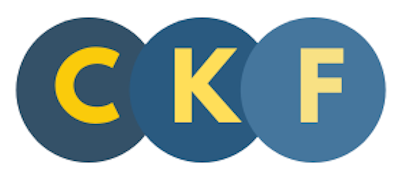 Your CV is your ticket to opening doors in the competitive job market. In a world where first impressions matter more than ever, your CV is the key to showcasing your skills and experiences.
Your CV is your ticket to opening doors in the competitive job market. In a world where first impressions matter more than ever, your CV is the key to showcasing your skills and experiences.
To help you stand out in the digital crowd, I’ve compiled 10 top tips for writing a CV that gets through online screening, connects with employers and is selected for interview.
Use a Targeted Headline:
Your name alone doesn’t tell employers what you bring to the table (unless you’re famous, in which case you probably don’t need a CV). So, under your name, include a headline that matches with the role you’re applying for. Whether you’re an “Investigation Specialist with Law Enforcement Background”, or a “Digital Marketing Maverick,” including a headline sets the tone for your CV, helps get you through online screening (ATS), and is more likely to capture an employer’s attention. Which is why every professional CV writer I’ve ever met (and I’ve met and assessed a lot) includes a Targeted Headline.
Tailor Your CV for Every Application:
Resist the urge to send out the same CV for every job application. Adapt the CV every time you apply for a role to make sure it includes all the key skills mentioned on the job description and person specification. By highlighting relevant skills and experiences, you communicate your level of commitment to the application and your CV becomes a personalised pitch which is much more effective than just a generic catchall CV. Pay particular attention to adapting your headline, profile and skills sections, then make sure the main skills are woven like a golden thread through your career section.
Say No to Fancy Templates:
Avoid fancy CV templates at all costs! As tempting as it may be to use flashy CV templates (and I’ve seen some beauties!), it’s crucial to stick to simplicity. Most Applicant Tracking Systems (ATS) struggle to interpret complex formatting, such as graphics, text boxes, and columns, or even section headings that make no sense. Opt for a clean, easy-to-read layout that allows ATS to scan and accurately assess your CV without missing any of your details. This can be hard to resist because when you research ‘CV Templates’ you will be bombarded with amazing, snazzy templates. Your friends may well have super artistic CVs, however, it’s just too risky at the moment unless you’re sending your CV directly to an employer via email rather than upload.
Embrace Colour, Avoid Graphics:
While you can add a splash of colour to make your CV visually appealing, steer clear of graphics. Use color strategically to draw attention to key sections but keep the overall design clean and professional.
Use Plain, Easy to Read English:
To build trust, flow and connection with the reader, your CV needs to avoid elaborate language, over-complicated words, or unnecessary jargon. My rule of thumb is to not include over-complicated words you wouldn’t say if you were talking; for example, I see ‘Spearheaded’ ‘Leveraged’ and ‘Utilised’ a lot on CVs but rarely hear these words in interviews – so it just sounds like you’re trying too hard and can build a barrier between you and the reader. Use plain, easy-to-understand English in all your application communications.
Include Achievements:
Don’t just list your responsibilities (unless you deliberately want to repel employers by creating a very dull CV that reads like a job description); showcase your accomplishments! Under each role for approx. the last 10 years, include things you’re proud of, things you want the employer to know that you have done. Consider any difficult things you’ve had to do, any problems you’ve solved, and people you may have trained or helped. In each role, reflect on what you’ve contributed towards that team, the organisation and customers. Quantify your achievements whenever possible, whether it’s meeting targets, completing projects ahead of schedule, or reducing costs. Tangible results show that you didn’t just do your job; you were good at it and therefore made a difference.
Quantify Your Impact:
Depending on the role you’re applying for it may be possible to provide concrete metrics to quantify the impact you’ve had in your previous roles. Whether it’s revenue growth, cost savings, or efficiency improvements, quantifying your contributions adds credibility to your CV and numbers really pop out on a CV and grab the reader’s attention.
Don’t let Chat GPT write your CV:
Chat GPT is a powerful tool for researching roles, employers, and required skills, however, avoid letting it write your CV because it isn’t good enough (yet!). The personal touch needed on your CV can’t be replicated by an AI because it doesn’t know you and your experience and achievements, so its CV content is generic and can be compensated with over-complicated ‘CV filler words’ that alienate the reader and send your CV to the reject pile. However, I would recommend using Chat GPT as a resource (I do and it’s helpful – similar to having a personal assistant!), but you need to take ownership for crafting your narrative. I use AI to check if I’ve missed anything against a specific job description for example, but not to write the content because CV writing is a nuanced skill that needs the human touch. If you need help writing a professional CV, then please Get in touch with me. I create CVs that are unique to you, reflect your strengths and core personality characteristics and are packed full of your achievements and skills, which is why they are so effective in getting you to interview.
Relevance is Key:
In the digital age, attention spans are shorter than ever! Keep your CV concise and focused. However, it’s a myth that your CV absolutely needs to be 2 pages. Most of my career change CVs are actually 3 pages long and they work. Recruiters (and even AI) can often tell you that your CV needs to be 2 pages max. However, through my experience, this doesn’t always work in practice, particularly for people seeking a career change. The main thing is to keep your information relevant, so when it comes to editing your CV, if a sentence doesn’t add any value, then take it out as every word needs to count.
Before you Send:
Before sending out your CV, get feedback from a trusted mentor, or professional contact. They can offer valuable insights, and spot things you may have overlooked, BUT balance this with remembering that you are the expert on you, and they are most likely not CV experts. Use the ‘Read Aloud’ function on MS Word to read your CV back to you, because any repetition, spelling or grammar mistakes will be massively obvious when you hear it read aloud.
In a job market saturated with digital noise, a well-crafted CV is your secret weapon. By following these tips, you’ll give yourself a big advantage over many of the candidates who are competing with you for the position. But remember, if you’re ever unsure about how to approach your CV and you want professional help, just get in touch!

Charlotte Spencer, CEO CK Futures Ltd
Charlotte Spencer is an award winning CV Writer, LinkedIn Writer and Interview Coach, helping people internationally to move confidently into new roles. With a background in HR, training and creative writing, Charlotte set up CK Futures to support people most at risk in the job market. Recognised by recruitment agencies, career coaches, charities and back-to-work organisations nationwide as an expert, Charlotte trains recruiters and other writers, and is a regular speaker at careers conferences, podcasts and events. Now specialising in supporting the police transition into new careers, Charlotte is also mum to two young adults, supports survivors of Domestic abuse into work, and is a Youth Mentor. Committed to maintaining CV writing standards and promoting ethical practice in the industry, Charlotte is Co-Founder and Vice Chair of the British Association of CV Writers.
